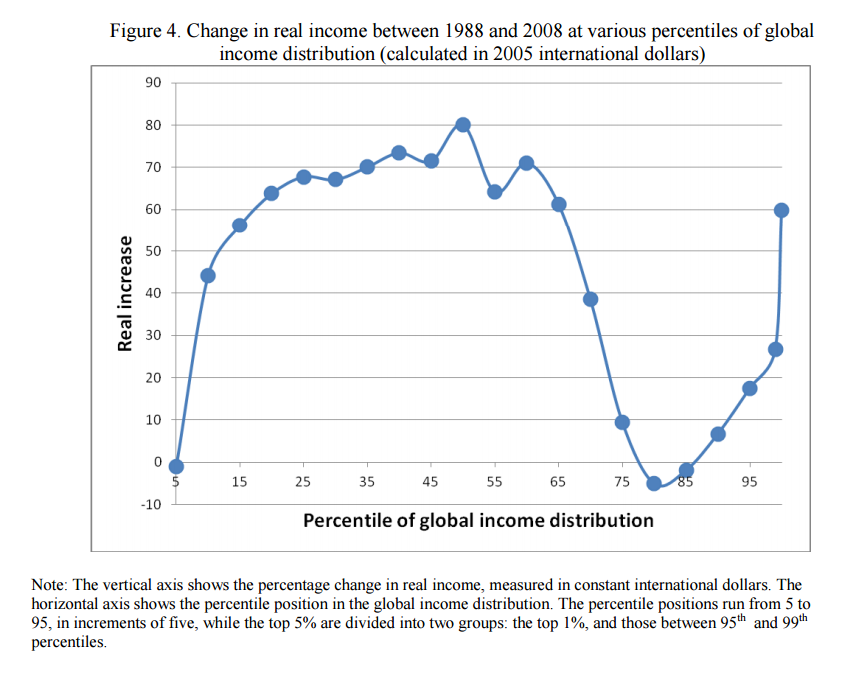Kerby Anderson
Globalization has benefited most everyone on this planet except for the middle class and especially people in the working class. A chart posted by Timothy Carney shows how the global population has fared economically over the last twenty years. I have included the graph with the transcript of this commentary so you can see it for yourself.
On the far left the poorest of the poor are still as poor as they were. But almost everyone else is doing better economically. This includes the global lower-middle class all the way to the global upper class. But the chart dips down dramatically for one segment that can be identified as the middle class and working class in wealthy countries like the United States.
In the past, the working class and middle class benefited from being born in America. They had access to resources and materials they could exchange in a free market. Also, they were shielded from competition and industries using workers with lower wages. Globalization opened America’s working class to competition from other parts of the global workforce.
This chart has appeared in other articles and has often been referred to as the globalization “elephant chart.” In other words, globalization is often the “elephant in the room” that nobody is talking about. Now, to be fair many politicians have talked about the fact that wages of the middle class have declined. Some have suggested trade barriers and all sorts of political and economic solutions.
The problem in finding solutions can be seen in the graph that shows how well the wealthy have done. The political and economic elite have benefited greatly from open borders, free trade, and globalization. How motivated do you think they might be to make economic changes that might benefit the working class when it might have a negative impact on their earning potential?
When elites in this country and other wealthy countries are getting richer from globalization, I think they won’t be very motivated to help the working class.
 Listen Online
Listen Online Watch Online
Watch Online Find a Station in Your Area
Find a Station in Your Area











 Listen Now
Listen Now Watch Online
Watch Online
